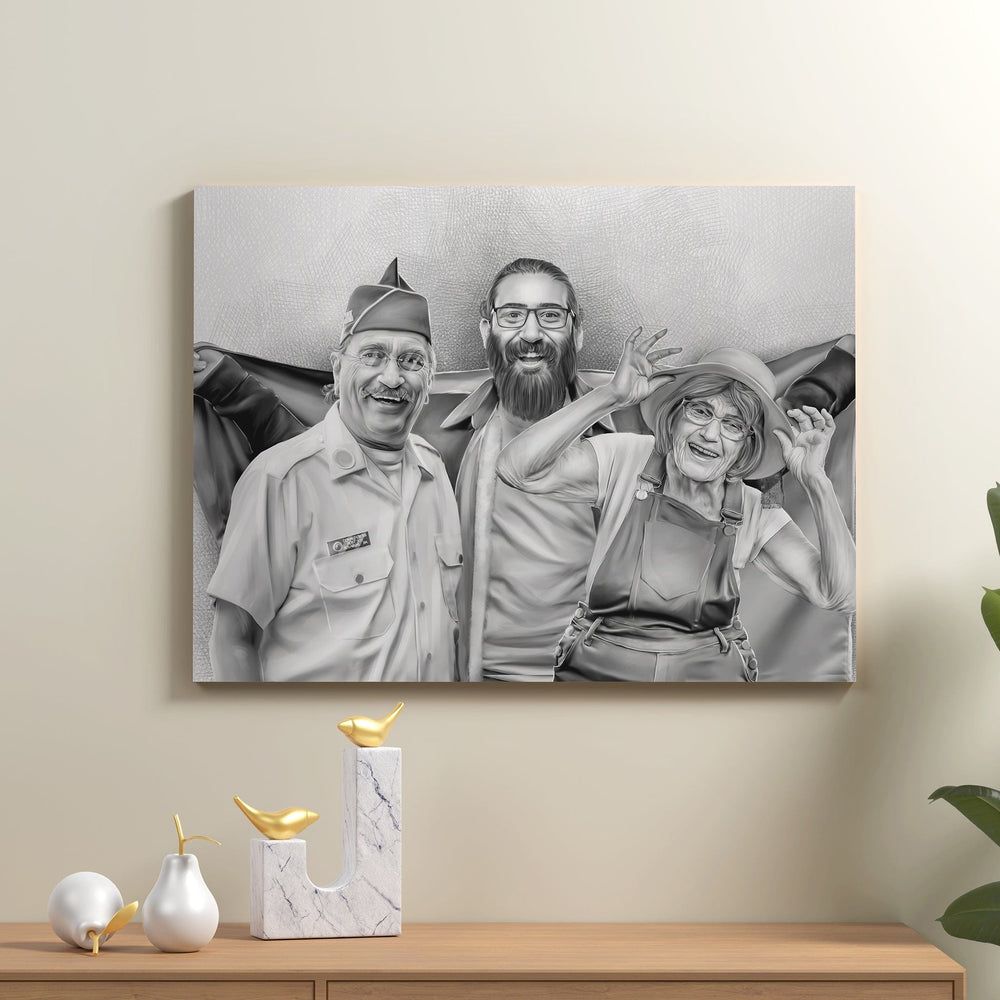Composition in Art: The Key to Creating Visually Balanced and Compelling Works

Art has always been a powerful form of expression, allowing artists to communicate their thoughts, emotions, and visions to the world. While every artwork is unique in its essence, there is one fundamental element that serves as the backbone of all great masterpieces, composition.

Photo by Karolina Grabowska from Pexels
This article will delve into what composition in art truly means, exploring its significance and uncovering the elements that artists employ to create visually compelling works. Whether you're an aspiring artist eager to enhance your skills or an art enthusiast with a keen eye for detail, this exploration of composition will deepen your appreciation and understanding of the art world.
What is composition art?
Composition art is the way that the different parts of a piece are put together so that the whole thing looks good. It is an important part of drawing, photography, graphic design, and other visual arts. A well-done design can lead the viewer's eye through the piece, get across the artist's message, and make them feel something.
Why is it important?

Grab Your Custom Children Pencil Drawing Here
Composition in art is of paramount importance as it plays a significant role in enhancing the overall visual appeal and impact of an artwork, for instance in children's pencil drawings. The arrangement and organization of elements within the artwork play a pivotal role in conveying emotions, messages, and aesthetics effectively. A well-composed artwork guides the viewer's eye, leading them through the visual journey intended by the artist.
In children's pencil drawings, a thoughtful composition can elevate their creative expressions, transforming their simple sketches into remarkable pieces of art that leave a lasting impression.
How to think about composition in your own artwork?
When approaching composition in your artwork, keep key aspects in mind. Define your purpose and identify the focal point to guide your viewers. Experiment with compositional techniques and balance elements to create visual harmony, and consider negative space for emphasis. Create depth and movement to engage the viewer's eye. Continually evaluate your composition from a distance and seek feedback to improve. With practice and an open mind, you'll develop a unique and visually compelling artistic style.
The elements of composition
Line
The most fundamental elements of composition in art is a line, which can be straight, curved, diagonal, or in any other shape. They aid in establishing boundaries, creating structure, and directing the viewer's eye through the piece of art.
Balance
Achieving balance ensures that no single area overpowers the others, creating a sense of stability and harmony in the composition. There are two primary types of balance: symmetrical and asymmetrical.
Shape
Shapes can be both geometric and organic, and they contribute to the overall structure and design of a piece. Whether simple or complex, shapes help create a sense of balance, rhythm, and unity in the composition.
Rhythm
Rhythm, as an essential element of composition in art, brings a dynamic and captivating flow to an artwork. Inspired by the musical concept, artistic rhythm involves the repetition or variation of visual elements, such as lines, shapes, colors, or patterns, to create a sense of movement and energy.
Proportion
Proportion is how the different parts of an artwork fit together in terms of size and scale. Keeping the right measurements is important for making realistic pictures or on-purpose mistakes.
How to use the elements of composition to create balance, emphasis, rhythm, etc.
Arrange items evenly on either side of an imagined center line. Balance visual weight unevenly by carefully arranging pieces. Highlight an element by making it stand out in color, size, form, texture, etc. To generate harmony and unity, repeat shapes, lines, colors, and patterns. Use lines to draw attention to the artwork's main subject. Use contrasting light and dark tones to make components stand out.

Get Your Personalized Watercolor Painting Here
In personalized watercolor paintings, the composition of art plays a pivotal role in capturing the essence of individuality. Each stroke of the brush and every color choice are thoughtfully orchestrated to reflect the subject's unique personality and story. The interplay of watercolor's fluidity with intentional design allows for a mesmerizing balance of form and expression, resulting in a truly personalized masterpiece that resonates with both the artist and the beholder.
Different types of composition
Rule of Thirds
In order to avoid a central focus point while maintaining compositional coherence, the well-known Rule of Thirds is applied. The audience will find the artwork to be more visually appealing as a result.
Vertical Composition
Height is emphasized in vertical compositions, which can also express a sense of strength and firmness. Portraiture and building design both benefit from this compositional technique.
Horizontal Composition
Horizontal compositions can evoke a feeling of serenity and tranquility by emphasizing width. It is frequently used in landscape paintings to represent expansive views.

Order Your Custom Couple Acrylic Painting Here
Different composition types have a profound impact on the portrayal of a relationship's dynamics and emotions in acrylic paintings of couples. For example, a symmetrical composition symbolizes balance and harmony in the couple's bond, while an asymmetric arrangement suggests spontaneity and excitement.
On the other hand, a centered composition accentuates the couple as the main focus, drawing attention to their connection. Skillful application of various compositional techniques by acrylic artists breathes life into couple paintings, creating an immersive and emotional experience for both the subjects and the audience.
Bottom Line
The composition in art is a crucial aspect that underpins the creation of visually balanced and compelling works. It serves as the backbone that guides the viewer's eye through an artwork, conveying emotions, messages, and aesthetics effectively.
Understanding the principles of composition and how to apply them effectively can significantly elevate an artist's work, making it more engaging and emotionally resonant. Hence, embracing creativity and thinking outside the box can lead to groundbreaking compositions that challenge conventional norms and create truly original and impactful art.
Memorialize Art's Masterful Composition Techniques
The importance of composition in art cannot be overstated, and Memorialize Art stands as a shining example of its significance in creating visually arresting and emotionally resonant works.
So, if you're searching for a customized painting that embodies the essence of composition in art, look no further than Memorialize Art. With their expertise and commitment to creating visually balanced and compelling works, they have got your back for any occasion.










